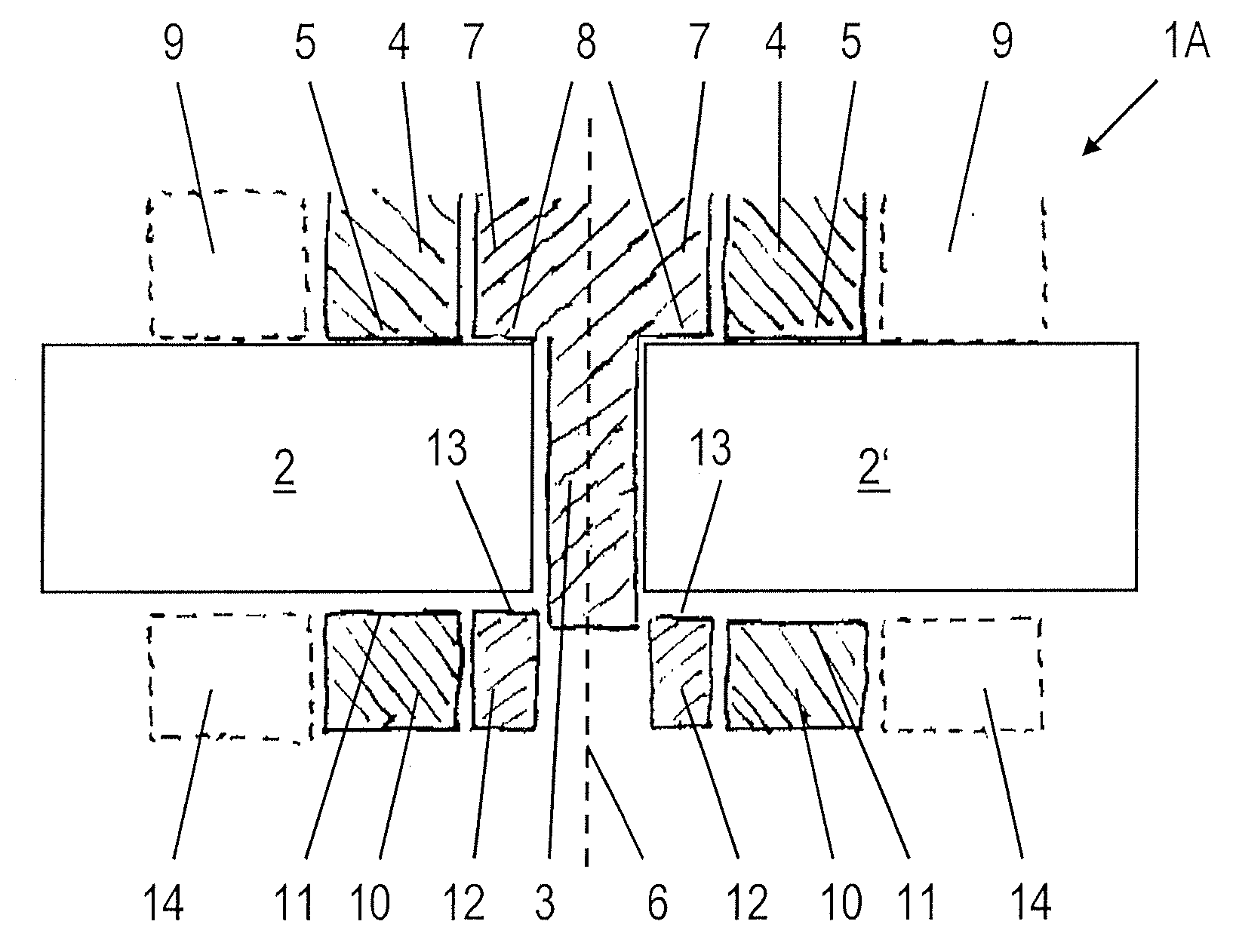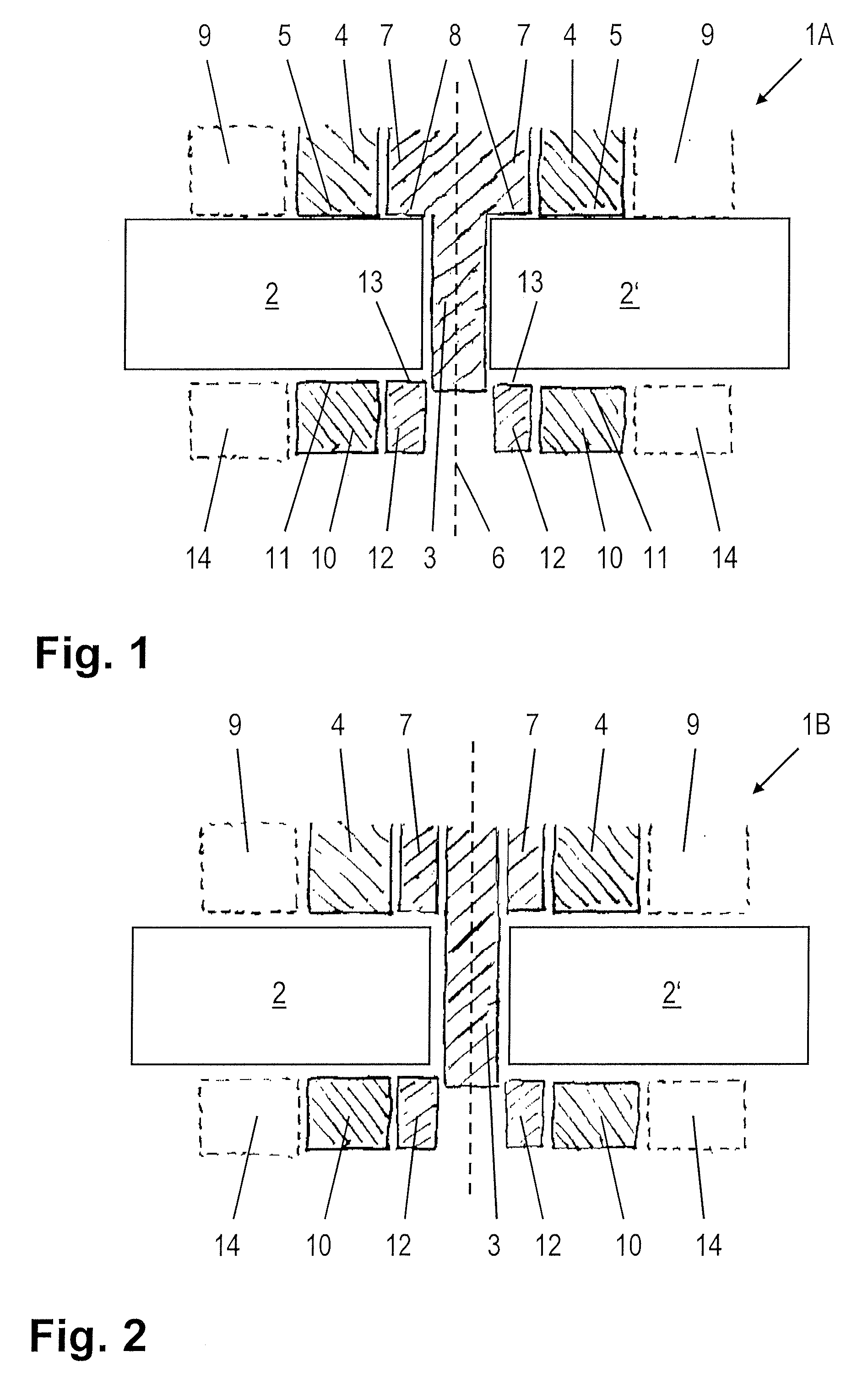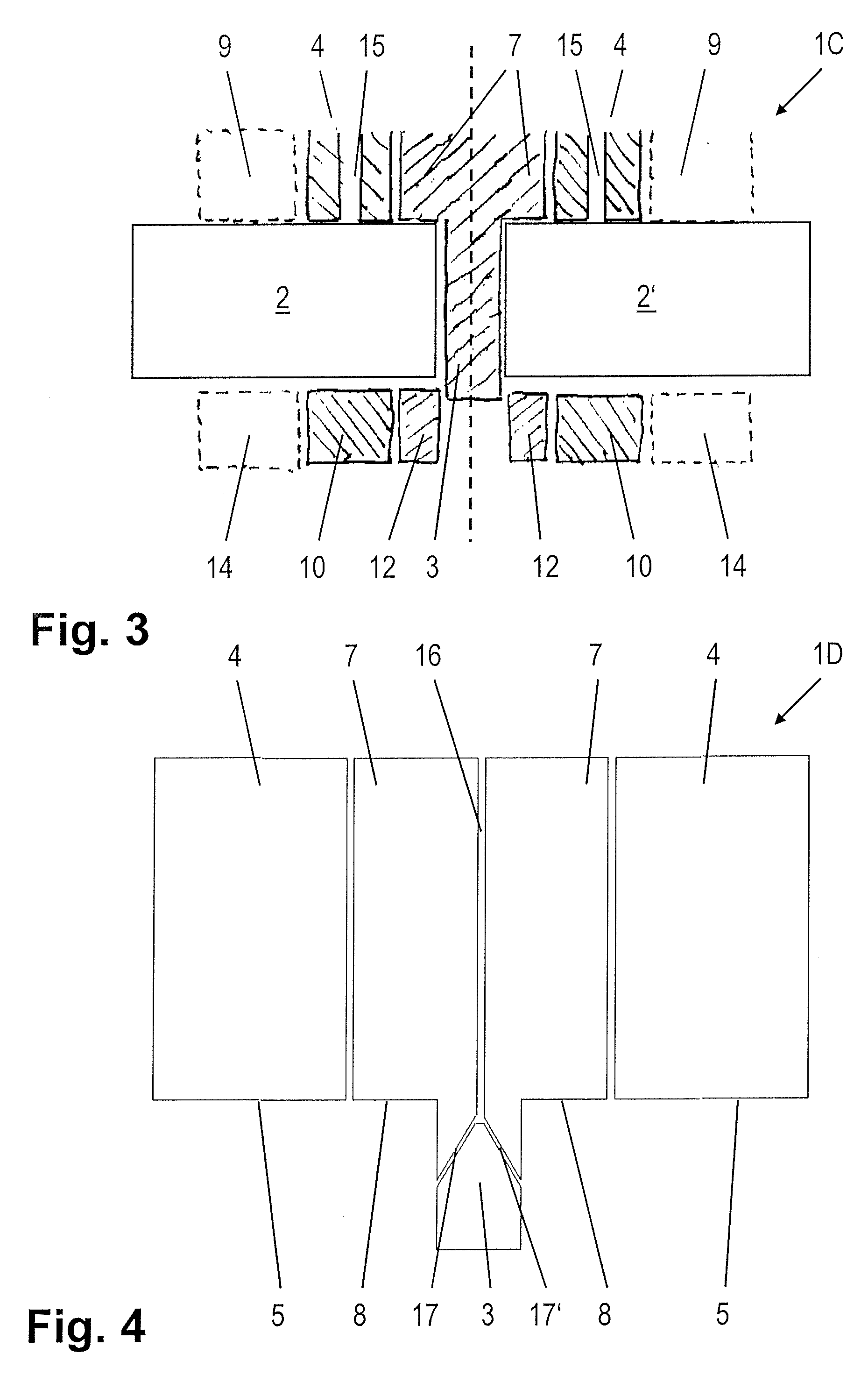Friction stir welding appparatus
a friction stir and appparatus technology, applied in the direction of soldering apparatus, welding devices, manufacturing tools, etc., can solve the problems of the relative movement of the workpiece, the properties of the weld seam, and the robots do not have the required stability to absorb the force, so as to achieve the effect of improving the stir zone, and reducing the overall siz
- Summary
- Abstract
- Description
- Claims
- Application Information
AI Technical Summary
Benefits of technology
Problems solved by technology
Method used
Image
Examples
first embodiment
[0039]FIG. 1 illustrates the present invention. The apparatus 1A for friction stir welding, which can be guided for example along the joint along which two workpieces 2, 2′ bear against one another, comprises a pin 3 and a first friction surface segment 4, the first friction surface segment 4 being designed in the form of a circular ring. The pin 3 and the first friction surface segment 4 are rotationally driven about a common axis of rotation 6. In this context, it is on the one hand conceivable to provide separate drives for the pin 3 and the first friction surface segment 4. However, it is also possible to use a first drive jointly for both the pin 3 and the first friction surface segment 4.
[0040] The first friction surface segment 4 has a first friction surface 5 for resting on the workpieces 2, 2′. Furthermore, there is a first inner segment 7, which is joined to the pin 3 and is surrounded by the first friction surface segment 4, the first friction surface segment 4 being rota...
second embodiment
[0048] The second embodiment according to the present invention, which is illustrated in FIG. 2, differs from the embodiment illustrated in FIG. 1 by virtue of the fact that the first inner segment 7 is not fixedly joined to the pin 3, but rather the pin 3 is displaceable linearly along the axis of rotation 6 in the direction in which the pin extends. Furthermore, the first friction surface segment 4 is displaceable in the direction in which the pin 3 extends and can in particular be moved away from the workpieces 2, 2′, so that the apparatus according to the invention can be used to carry out what is known as “spot welding”. In this case, the pin 3, which does not initially protrude beyond the first friction surface 5, is lowered, rotating, into the upper of two workpieces positioned on top of one another, while at the same time the first friction surface segment 4 is moved away from the workpieces 2, 2′, so that material which is displaced by the pin 3 can penetrate into the volum...
third embodiment
[0049] The third embodiment, shown in FIG. 3, of an apparatus 1C according to the invention differs from the first exemplary embodiment, which is illustrated in FIG. 1, by virtue of the fact that friction surface passages 15 are provided in the first friction surface segment 4, in order for a filler material to be introduced into the zone which has been plasticized by the friction with the pin 3, with the inner segment13 and with the friction surface segment 4.
[0050] Alternatively, as in the fourth exemplary embodiment, shown in FIG. 4, of an apparatus 1D, it is possible to provide a central passage in the pin 3, through which a filler material is likewise introduced into the interior of the weld seam. The apparatus 1D once again comprises a pin 3 and a first friction surface segment 4. The first friction surface segment 4 is designed in the form of a circular ring and surrounds the pin 3. In this embodiment, which is preferred in this respect, the feed device is designed as a centr...
PUM
| Property | Measurement | Unit |
|---|---|---|
| friction | aaaaa | aaaaa |
| friction surface | aaaaa | aaaaa |
| inner friction | aaaaa | aaaaa |
Abstract
Description
Claims
Application Information
 Login to View More
Login to View More - R&D
- Intellectual Property
- Life Sciences
- Materials
- Tech Scout
- Unparalleled Data Quality
- Higher Quality Content
- 60% Fewer Hallucinations
Browse by: Latest US Patents, China's latest patents, Technical Efficacy Thesaurus, Application Domain, Technology Topic, Popular Technical Reports.
© 2025 PatSnap. All rights reserved.Legal|Privacy policy|Modern Slavery Act Transparency Statement|Sitemap|About US| Contact US: help@patsnap.com



